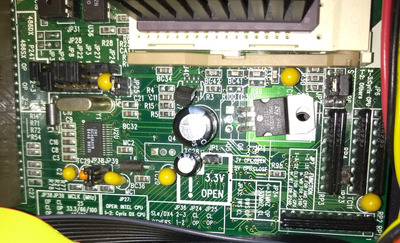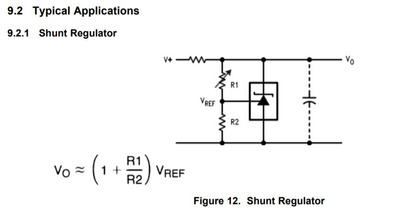First post, by squelch41
Hi,
I want to try and push the voltage up on my 5x86 to get a stable overclock at 160MHz.
I assumed the TO-220 package on the board near the 3.3v/5v jumper would be a voltage regulator but it isnt, its a TIP31C power transistor (3.3v is jumper open, 5v is jumper closed)
Changing the jumper does change the voltage on the emitter, and the voltage on the emitter is the same as the VCC in the socket.
I was trying to work out how I'd alter the voltage here, ideally without removing the working TIP31C.
I was wondering (slightly optimistically!) if adding resistor(s) across the jumper would affect the output voltage - it does if there is no load (adding ~40 ohms raises the voltage to about 3.8v) but as soon as you put a CPU in, the voltage locks to 3.35v as though the jumper was open. I faffed about with various resistances to see if it made any difference - increasing the resistance did increase the voltage without a cpu load, but as soon as the CPU was in it locked to a stable 3.35v.
My electronics knoweldge is fairly limited - I'd appreciate some advice! Is there a sane way of adjusting the voltage or do I just have to live with it?
(I was using a 5v AMD 486 DX2 when testing so I didnt fry my 3.3v CPU whilst mucking about!)
(Also, FWIW, I tried 50MHz bus with 3x multiplier but my video card cant cope with the 50MHz bus - POST card gets stuck in the video intialisation part of the codes and no POST - clock to 40MHz and it is fine)
Thanks!
V4P895P3 VLB Motherboard AMD 486 133MHz
64mb RAM, CF 4Gb HDD,
Realtek 8019 ethernet + XT-IDE bios ROM, ES1869 soundcard, VLB Cirrus Logic GD5428 1mb VGA
440bx MSI 6119, modified slocket , Tualitin Celeron 1.2Ghz 256mb SD-RAM, CF 4GB HDD, FX5200 gfx

